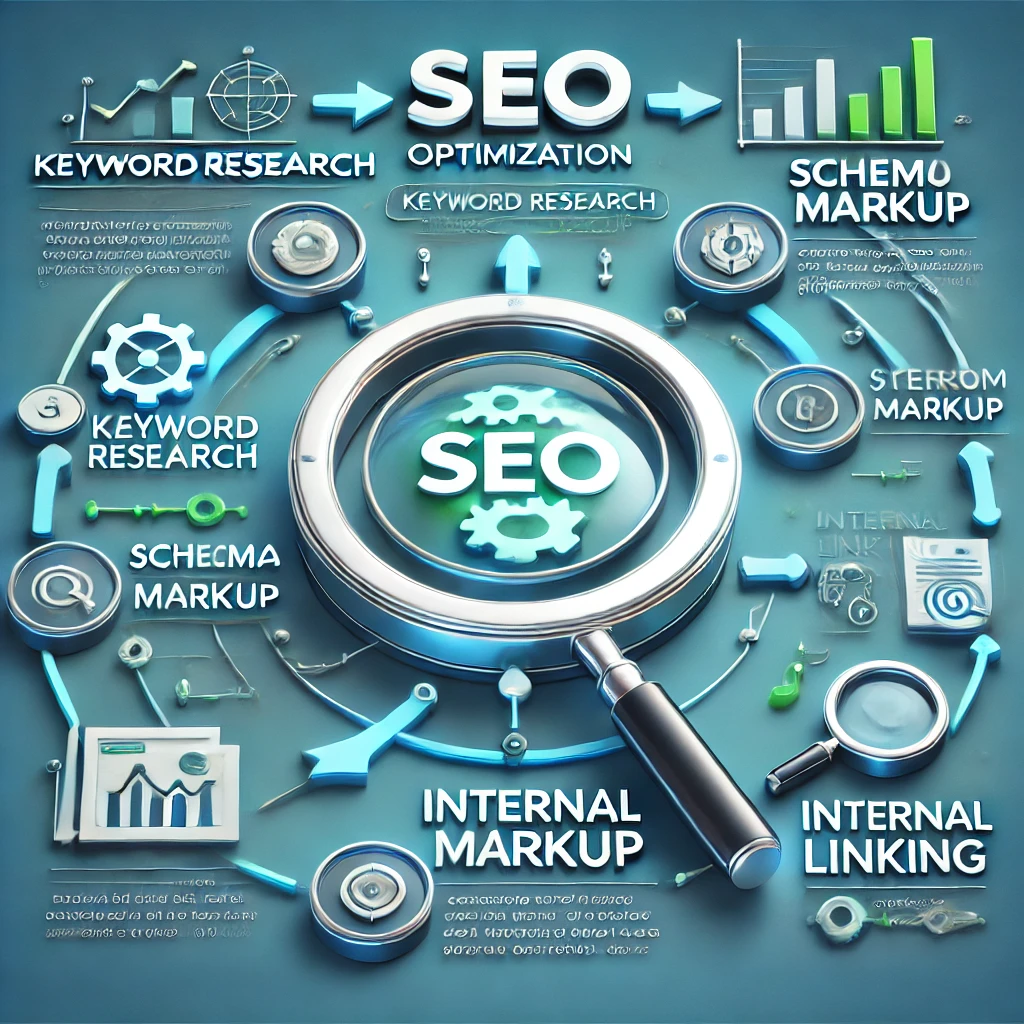In the ever-evolving world of search engine optimization (SEO), businesses and marketers are constantly looking for ways to scale their organic traffic. Programmatic SEO is one of the most effective ways to automate content creation and dominate search rankings with thousands of pages targeting various keywords. But what exactly is programmatic SEO, and how can it help your business grow?
What is Programmatic SEO?
Programmatic SEO is the process of automating the creation of thousands (or even millions) of landing pages using structured templates and data-driven insights. Instead of manually creating pages, businesses use algorithms, databases, and content automation to generate optimized pages at scale.
This approach is widely used by travel sites, e-commerce platforms, job portals, and directories, where thousands of pages need to be indexed for different locations, categories, or product variations.
Example of Programmatic SEO in Action
Imagine you run a hotel booking website. Instead of manually creating pages for each city, you can use programmatic SEO to automatically generate pages like:
✅ “Best Hotels in New York”
✅ “Best Hotels in Los Angeles”
✅ “Best Hotels in San Francisco”
By pulling data from structured sources like Google Maps, reviews, pricing data, and hotel descriptions, you can create optimized landing pages in bulk.
How Does Programmatic SEO Work?
The core process of programmatic SEO involves automating three key areas:
1. Data Collection & Structuring
Gather data from reliable sources such as:
🔹 APIs (e.g., Google Maps API, OpenWeather API)
🔹 Web Scraping (extracting content from various sources)
🔹 Databases (existing product catalogs, job listings, or directories)
2. Creating a Content Template
Once the data is structured, you create a content template that dynamically inserts relevant keywords and data points.
Example of a Page Template for Travel Websites
👉 Title: Best Hotels in Mohali
👉 Meta Description: Discover top-rated hotels in Mohali. Compare prices, read reviews, and book your perfect stay!
👉 Content:
✔️ Introduction about hotels in Mohali
✔️ List of featured hotels with details
✔️ Nearby attractions
✔️ User reviews & ratings
3. Automating Page Generation
By using AI, content automation tools, and CMS plugins, businesses can automatically generate SEO-friendly landing pages at scale.
Here’s a visual representation of how programmatic SEO works:

Benefits of Programmatic SEO
✅ Massive Traffic Growth – Scale content and rank for thousands of long-tail keywords.
✅ Time Efficiency – Automate page creation instead of manual efforts.
✅ Higher Conversions – Target specific search queries with optimized landing pages.
✅ Competitive Edge – Outrank competitors by covering a broader range of search terms.
Challenges of Programmatic SEO
❌ Thin or Duplicate Content – Poorly executed automation can create low-value content.
❌ Google Penalties – Google may deindex spammy, low-quality pages.
❌ Technical Complexity – Requires strong data management and SEO expertise.
To avoid these pitfalls, follow best practices for effective programmatic SEO.
Best Practices for Programmatic SEO
1. Prioritize High-Quality Content
Google values high-quality, unique content. Ensure that each page provides:
✔️ Useful information
✔️ Engaging content structure
✔️ Unique meta descriptions & titles
2. Optimize for Long-Tail Keywords
Since programmatic SEO targets thousands of variations, focus on long-tail keywords with lower competition and higher conversion rates.
3. Implement Internal Linking
Strategic internal linking helps search engines understand site structure and improves crawlability.
4. Use Schema Markup
Enhance search visibility by using structured data (schema markup) for better indexing and featured snippets.
5. Monitor Performance & Fix Errors
Regularly audit your Google Search Console for errors like:
❌ Duplicate content issues
❌ Broken links
❌ Indexing problems
Examples of Successful Programmatic SEO
1. Zillow (Real Estate Listings)
Zillow generates millions of location-based pages for home listings, ranking for keywords like “Houses for Sale in New York” or “Apartments in Los Angeles”.
2. TripAdvisor (Travel Recommendations)
TripAdvisor uses programmatic SEO to create pages like “Best Restaurants in Paris”, pulling real-time reviews and data.
3. Indeed (Job Listings)
Indeed automatically generates job listing pages based on location, job type, and industry, targeting millions of search queries

Conclusion
Programmatic SEO is a game-changer for businesses looking to scale organic traffic effortlessly. By leveraging data-driven automation, structured templates, and SEO best practices, you can create thousands of high-quality, optimized pages that rank higher and drive conversions.
However, quality matters. Ensure your content remains valuable, unique, and relevant to avoid Google penalties.
Are you ready to implement programmatic SEO for your business? 🚀 Let’s discuss how you can automate and optimize your SEO strategy for massive growth!



